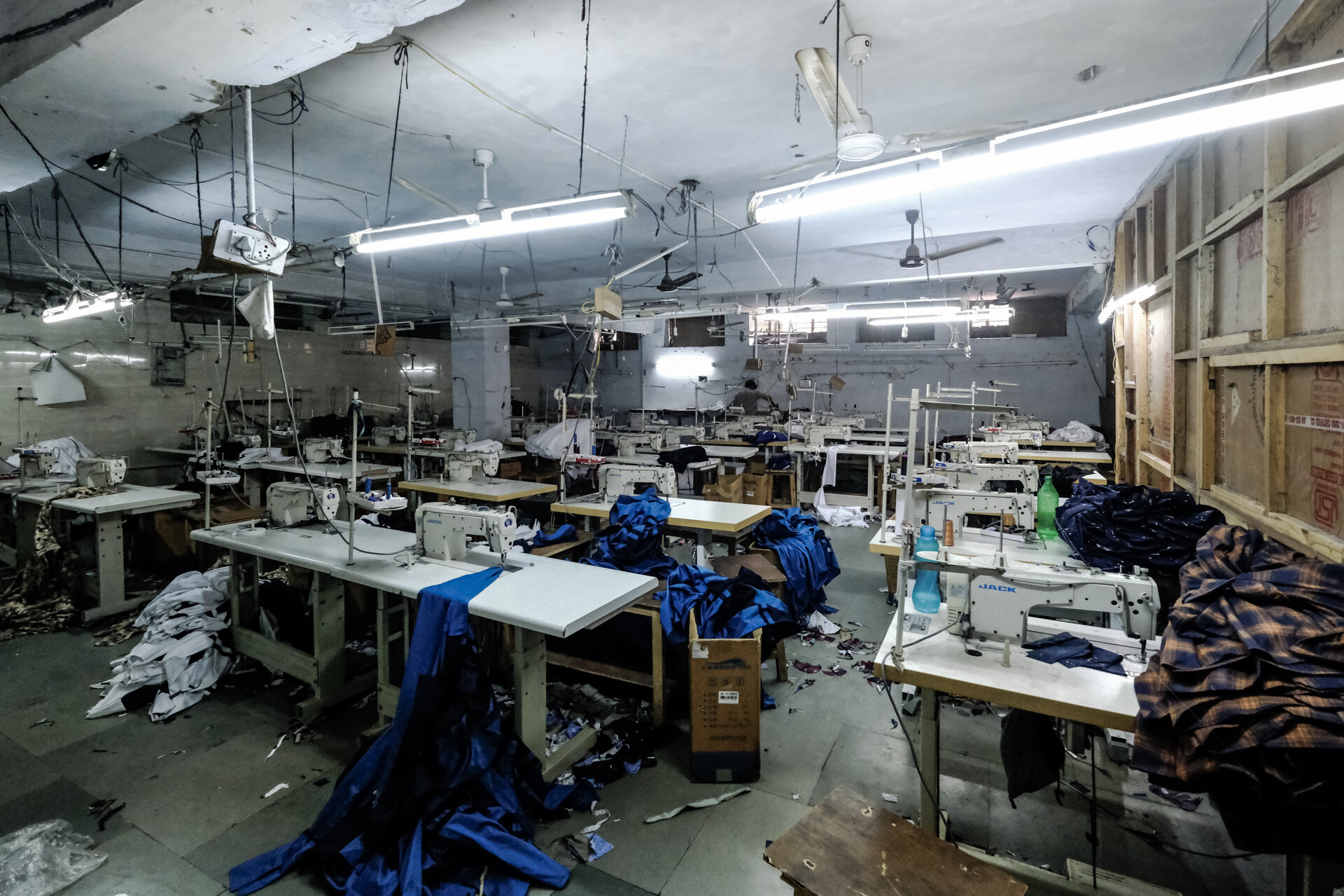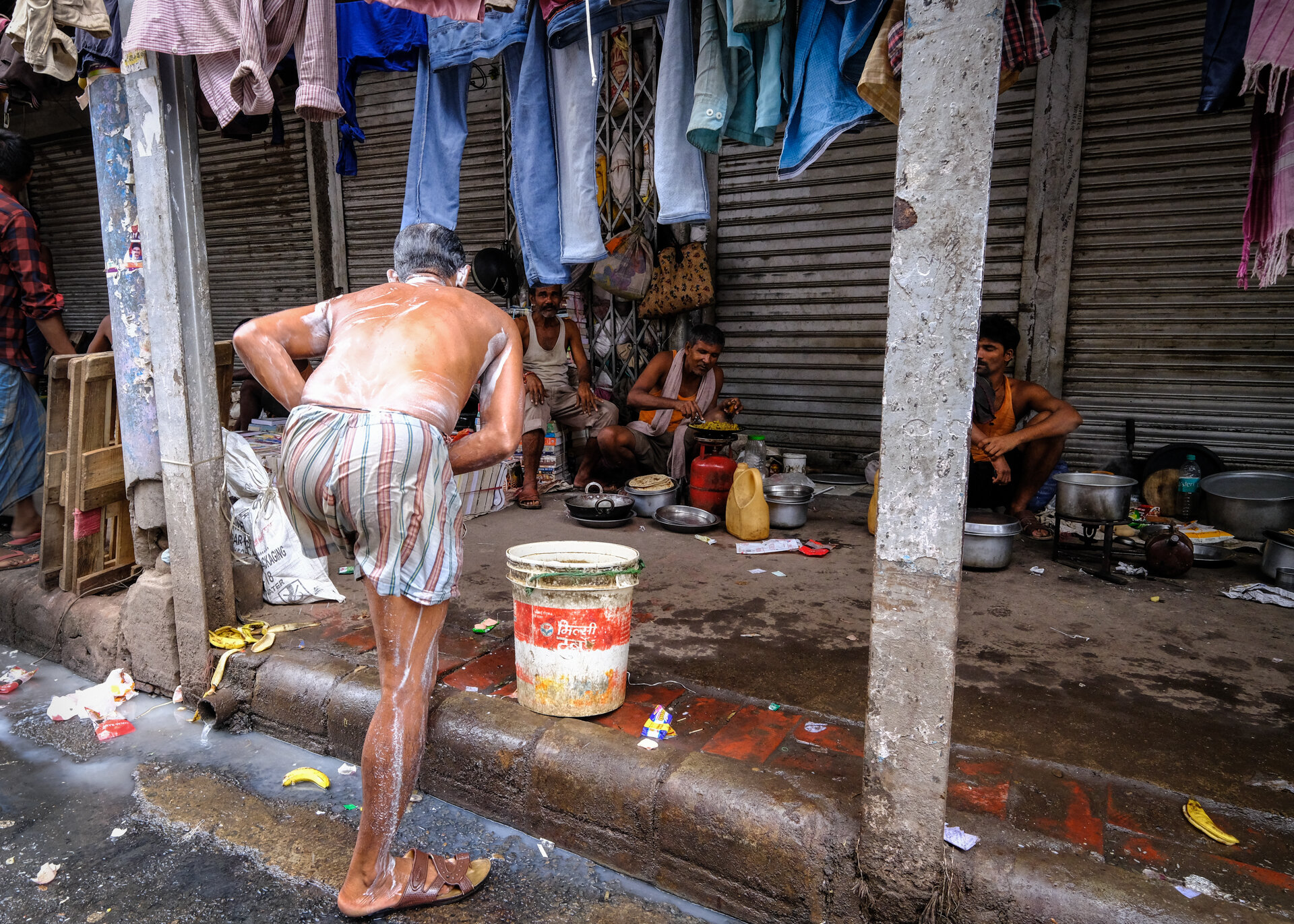The tiny Golden City of Jaisalmer sits in the desert surrounded by military and navel bases due to its location - 150 miles from the Pakistan border. The slogan “Cut Hard Cut Deep’ visible at every camp entrance, reminding you of the tensions within this country. No longer benefitting from the silk route taxes, Jaisalmer has fallen in importance and has succumbed to the tourist trade. I don’t have a problem with this if it is done well. Unfortunately it’s the same shops, same products over and over again.
The splendour of the golden sandcastle-like fort is incredible. I have never seen a living fort before and was stunned by the complex carvings and quiet beauty of the sandstone dwellings. The harsh bright sunlight does not do them justice, it is the buttery glow of the late afternoon sun and the evening lights that shows this fort at its best.
Brahmin Family in Fort House
Tiny Brahmin Fort Houses
Due to the open sewers and large volume of water used in the fort-town the foundation walls are crumbling away below. Ideally the government would like all the Brahmin residents to give up their houses and let the fort become a monument and tourist shopping arcade. They are standing their ground, determined to stay in their beautifully sculptured, cool and peaceful dwellings. It’s a catch-22 situation.
Brahmin lady asleep.
Morning wash
The Jain Temples are physically beautiful, completely different to any others we have seen. I’m well aware of the dress codes for entrance to some temples and holy places in India and I respect and abide by those rules. However, the notice outside this particular temple I think is unacceptable, insulting and derogatory.
All religions have their strange idiosyncratic rules and ways of doing things, but publicly making an issue out of nothing in order to restrict a sex is backwards in a modern world. I cannot believe this has remained unchallenged.
The heat is searing. Each morning we saw the lake reduce in size to the point the Water Buffalo didn’t even bother making their morning stroll there. The local dogs are in abundance and just as adorable as in all the other cities we have been. Two litters were born when we arrived, with a loss of three during our stay. Thankfully the 8 remaining pups appeared to be getting stronger by the end of our stay. Despite the casualties, the animals here look healthy and happy.
Morning view from our room.
Away from the trappings of tourism, the base of the town is interesting for people watching. There are no women working here at all. The only female presence is in the homes and the downtown food markets.
Now well and truly entrenched in the desert, We arranged a jeep and guide to take us to see desert life. We were promised temples, ruins, sand dunes and a sunset dinner specially prepared for us.
We got a beaten-up car, a driver who couldn’t drive and a box of pre-made food.
At our first stop, Bada Bagh Cenotaphs, we were greeted with the message ‘Your life, Your risk ‘ - little did I know it was a warning of what was to come.
Whizzing through the landscape of Sam Dunes at breakneck speed we passed a variety of English Wine and Beer shops and desert camps complete with camels, coaches and dancers.
After three near head-on collisions with lorries, and speeds of over 80mph, irrelevant of pot-holes, speed bumps and cows, I had to get out. Our lives weren’t worth the risk.
We decided to leave Jaisalmer, there was nothing more to be seen.





























